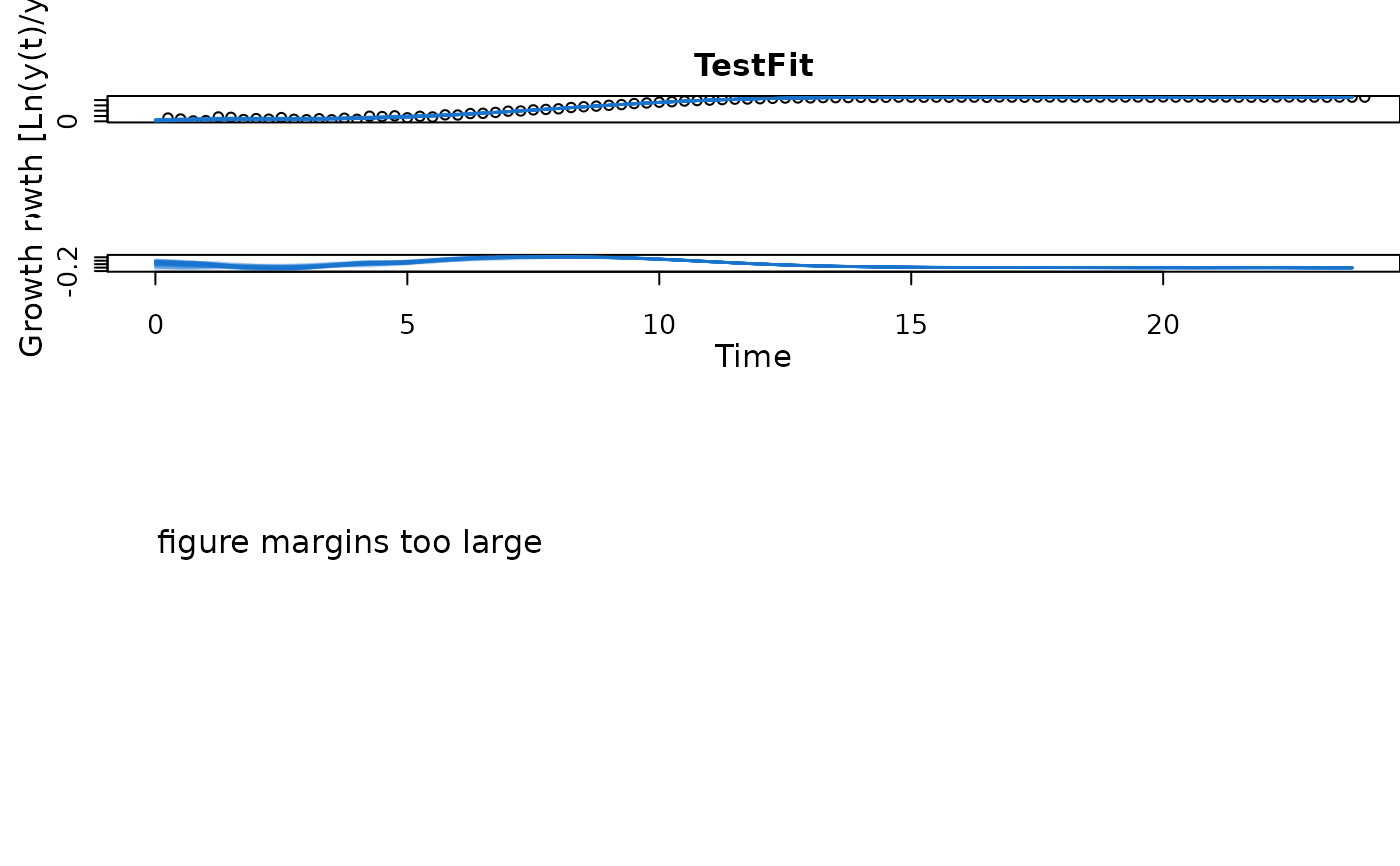Perform a bootstrap on growth vs. time data followed by spline fits for each resample
Source:R/nonparametric_fits.R
growth.gcBootSpline.Rdgrowth.gcBootSpline resamples the growth-time value pairs in a dataset with replacement and performs a spline fit for each bootstrap sample.
Usage
growth.gcBootSpline(time, data, gcID = "undefined", control = growth.control())Arguments
- time
Vector of the independent variable (usually: time).
- data
Vector of dependent variable (usually: growth values).
- gcID
(Character) The name of the analyzed sample.
- control
A
grofit.controlobject created withgrowth.control, defining relevant fitting options.
Value
A gcBootSpline object containing a distribution of growth parameters and
a gcFitSpline object for each bootstrap sample. Use plot.gcBootSpline
to visualize all bootstrapping splines as well as the distribution of physiological parameters.
- raw.time
Raw time values provided to the function as
time.- raw.data
Raw growth data provided to the function as
data.- gcID
(Character) Identifies the tested sample.
- boot.time
Table of time values per column, resulting from each spline fit of the bootstrap.
- boot.data
Table of growth values per column, resulting from each spline fit of the bootstrap.
- boot.gcSpline
List of
gcFitSplineobject, created bygrowth.gcFitSplinefor each resample of the bootstrap.- lambda
Vector of estimated lambda (lag time) values from each bootstrap entry.
- mu
Vector of estimated mu (maximum growth rate) values from each bootstrap entry.
- A
Vector of estimated A (maximum growth) values from each bootstrap entry.
- integral
Vector of estimated integral values from each bootstrap entry.
- bootFlag
(Logical) Indicates the success of the bootstrapping operation.
- control
Object of class
grofit.controlcontaining list of options passed to the function ascontrol.
References
Matthias Kahm, Guido Hasenbrink, Hella Lichtenberg-Frate, Jost Ludwig, Maik Kschischo (2010). grofit: Fitting Biological Growth Curves with R. Journal of Statistical Software, 33(7), 1-21. DOI: 10.18637/jss.v033.i07
See also
Other growth fitting functions:
growth.drFit(),
growth.gcFitLinear(),
growth.gcFitModel(),
growth.gcFitSpline(),
growth.gcFit(),
growth.workflow()
Examples
# Create random growth dataset
rnd.dataset <- rdm.data(d = 35, mu = 0.8, A = 5, label = 'Test1')
# Extract time and growth data for single sample
time <- rnd.dataset$time[1,]
data <- rnd.dataset$data[1,-(1:3)] # Remove identifier columns
# Introduce some noise into the measurements
data <- data + stats::runif(97, -0.01, 0.09)
# Perform bootstrapping spline fit
TestFit <- growth.gcBootSpline(time, data, gcID = 'TestFit',
control = growth.control(fit.opt = 's', nboot.gc = 50))
plot(TestFit, combine = TRUE, lwd = 0.5)
